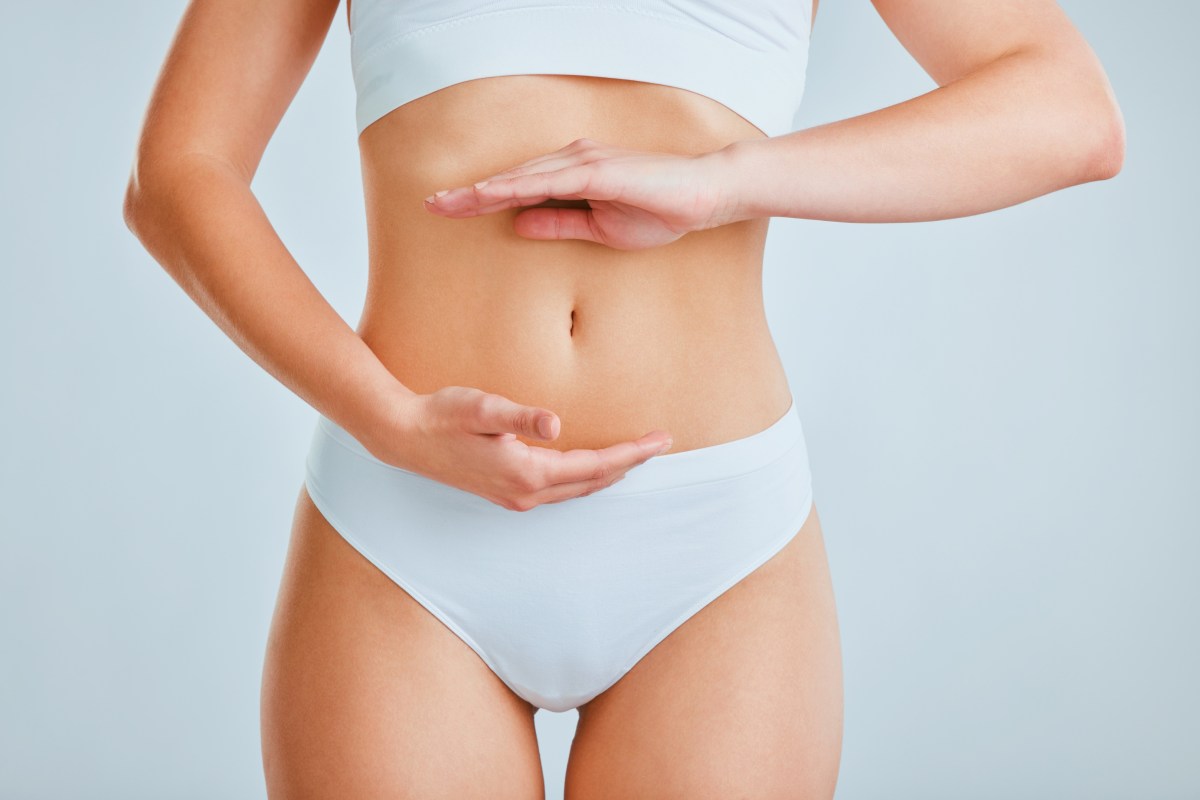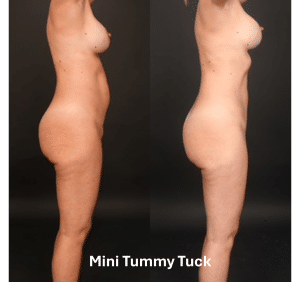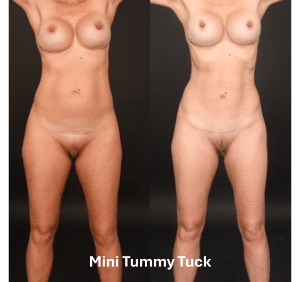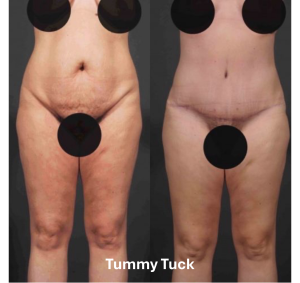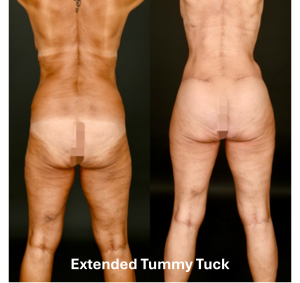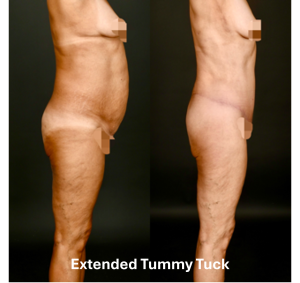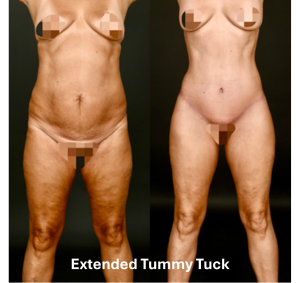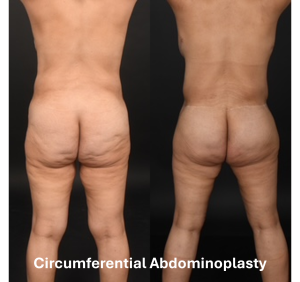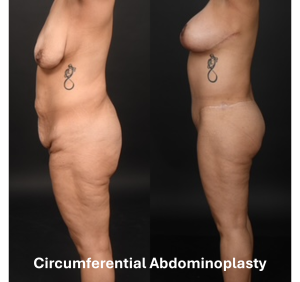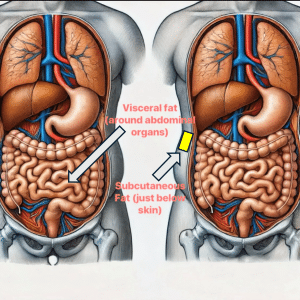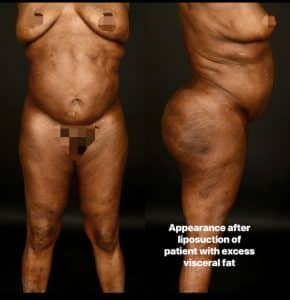
It’s part and parcel of mommy makeovers and is more in demand than ever, thanks to the pressures of social media and the washboard abs streaming on our TVs, but tummy tuck surgery, also known as abdominoplasty, is nothing new. The procedure — which is elective and aimed at improving the shape and appearance of the abdomen — was first performed in France in 1890. In 1899, Baltimore surgeon Dr. Kelly performed the first tummy tuck in the U.S. Since then, advances in medicine have transformed this surgery into a safe, streamlined procedure that, according to Dallas-based cosmetic surgeon Dr. Sam Jejurikar, has given the term “cutting edge” a whole new meaning.
What should I expect from tummy tuck surgery?
According to the Mayo Clinic, people with excess fat and/or skin in the navel area, or those with a weakness in the lower abdominal wall, are common candidates for abdominoplasty. The surgery removes excess skin and fat from the abdomen. Using permanent sutures, the connective tissues in the abdomen are tightened as well.
Tummy tuck procedures generally take two to three hours and are performed in a hospital or outpatient surgical facility setting under general anesthesia. During the procedure, the plastic surgeon makes a horizontal, oval, or elliptical incision, depending on the amount of tissue to be removed, just above the pubic line. When the incision heals, the resulting scar runs along the natural skin crease of the bikini line. In addition to removing excess skin and fat and tightening the connective tissues, the surgeon pulls the belly button through a small incision, anchors it into its normal position with sutures, and then judiciously repositions the surrounding skin to achieve a firmer, more toned aesthetic.
What are the benefits of tummy tuck surgery?
The main reasons for undergoing a tummy tuck procedure are enhancing body image and boosting self-esteem. Feeling good about how we look has a definite correlation with our mental health.
While body image concerns are relatively common and are not considered mental health issues per se, according to the U.K.’s Mental Health Foundation, such worries can signal risk factors for potential mental health problems. It reports: “Research has found that higher body dissatisfaction is associated with a poorer quality of life, psychological distress, and the risk of unhealthy eating behaviors and eating disorders.”
In addition to improving self-esteem, tummy tucks also afford patients a host of other valuable health benefits.
A tummy tuck can strengthen your abdominal muscles. Having a stronger core can improve flexibility, help alleviate lower back pain, improve posture, and ward off hernias.
A tummy tuck may reduce the risk for certain medical conditions, including sleep apnea, diabetes, heart disease, and gallbladder disease.
A tummy tuck can increase bodily function control and decrease urinary stress incontinence occurrences. Many factors lead to the loss of bowel or bladder control. Aging, multiple pregnancies, and significant weight loss can be all factors. These issues can be exacerbated by the presence of excess fat and skin in the abdomen. Removing extra skin and fat and tightening connective tissue in the abdomen can improve control over bodily functions and lessen involuntary urinary leaks.
How long after a tummy tuck can I sleep on my stomach?
The accepted rule of thumb is to avoid sleeping on your stomach for six weeks after undergoing tummy tuck surgery. This hiatus from stomach sleeping ensures the skin and muscles have adequate time to heal. However, each patient is different, and some may need to stay off their tummies longer than six weeks. It is highly recommended you discuss a postsurgical sleeping protocol with your doctor prior to the procedure.
What’s the best way to recuperate from a tummy tuck procedure?
Recuperating from a tummy tuck takes time and proper care of the body. To facilitate a speedy recovery, I recommend the following:
Eat right and keep hydrated. High-protein foods benefit healing by boosting energy and promoting muscle growth. Conversely, foods with high sugar and sodium content can have a negative impact on the healing process and should be avoided. While patients who’ve undergone abdominoplasty experience swelling, drinking adequate amounts of water (eight glasses per day is recommended) reduces retention by flushing fluids from your system.
Don’t overdo it. People are eager to dive back into their everyday routines after surgery, but this can be a mistake. Instead, ease gradually into daily activities, and if your body is giving you the warning to stop doing something, listen to it. In general, tummy tuck patients should refrain from pulling, pushing, bending, and lifting heavy objects for a minimum of six weeks after surgery.
Look into lymphatic drainage massage. As the name implies, lymphatic drainage massage stimulates the body’s lymphatic system. This enhances its efficiency, speeding the removal of toxins, boosting immune response, and aiding in the overall healing process.
What’s the difference between a tummy tuck and liposuction?
As mentioned above, a tummy tuck is a surgical procedure performed under general anesthesia in a hospital or outpatient surgical setting. Liposuction is a much less invasive procedure that does not require a surgical incision and can be performed under a local anesthetic (although general is preferred). Abdominoplasty is strictly abdominal surgery, while liposuction can be performed on any area of the body where stubborn fatty deposits that resist traditional weight loss protocols occur, including the neck, thighs, back, and arms.
During liposuction, no skin is removed, nor is fat surgically excised. Instead, a saline, water, and anesthesia solution is injected into the target area. A cannula is then inserted, and the fat is sucked out. Those considering either procedure should consult with a reputable cosmetic surgeon before proceeding to better understand which one best meets their needs.
How soon is it safe to get a tummy tuck after pregnancy?
Due to significant changes in the body, one of the most prevalent times women choose to get a tummy tuck is after pregnancy. It’s only natural to want to get back to your pre-baby body as soon as you can. However, some guidelines must be adhered to in order to safeguard a woman’s health and achieve the maximum benefits from the procedure.
Six months after giving birth is the earliest patients should schedule a tummy tuck. Moms who’ve undergone a C-section may have to wait longer (up to a year) and should discuss any potential surgery with their doctor. There are other factors that may make postponing a tummy tuck a good idea as well:
Are you still breastfeeding? Breastfeeding influences hormonal changes in the body that can impact the healing process and influence weight fluctuations. It’s recommended to wait until three months after you finish breastfeeding before getting a tummy tuck.
Has your weight stabilized? Weight gain during pregnancy is normal. Getting back or close to pre-baby weight can take time, and many moms experience postpartum weight fluctuations. While a tummy tuck will improve physical appearance, it’s not strictly intended to be a weight loss procedure. Tummy tucks are most effective when patients are at or near their ideal weight.
Do you plan to get pregnant again? The logic of this is pretty simple: Every pregnancy can result in additional stretching of tissues and added fat to the midsection, all of which can undo the good your tummy tuck has done. If you think there might be more kids in your future, putting off tummy tuck surgery is best until after welcoming your last blessed event.
Can men get a tummy tuck?
The simple answer to this question is, yes. Men can and do get tummy tucks — and are doing so in increasing numbers. That said, when it comes to tummy tucks, not all men are created equal. Some men make better candidates for this surgery than others. Dr. Jejurikar advises men interested in the procedure to discuss their expectations with a certified cosmetic surgeon to ensure their desired outcome is realistic.
Can a tummy tuck be combined with other surgery?
Yes. One of the most popular cosmetic procedures currently performed is what’s known as the “mommy makeover,” which can combine a tummy tuck with breast enhancement and/or liposuction. The upside of combined surgeries is that they require only one recovery period. However, that recovery period will likely be longer than that of a single procedure. Your overall health is the biggest factor in determining whether multiple procedures are viable and must be determined by a doctor on a case-by-case basis.
Who should not get a tummy tuck?
Tummy tucks work wonders for some — but they’re not for everyone. The Mayo Clinic cautions that prior to embarking on the procedure, potential patients should thoroughly discuss any of the following conditions or concerns they have with their surgeon:
You plan to lose a significant amount of weight. A major weight loss can result in excess skin on the abdomen. It’s better to wait until weight goals are met before undertaking tummy tuck surgery.
You have a severe chronic condition, such as heart disease or diabetes. While abdominoplasty may lessen these conditions, if you already have them, they can put you at greater risk during surgery, especially when a general anesthetic is involved.
You have a body mass index greater than 30. Again, while tummy tucks do result in weight loss, it is not considered weight loss surgery. Patients who fare best are at or close to their ideal body weight.
You smoke. In general, smoking increases surgical risks. It’s not a hard-and-fast rule, but nonsmokers generally enjoy better surgical outcomes.
You’ve had previous abdominal surgery that resulted in significant scar tissue. Excessive scar tissue can be a side effect of any abdominal surgical procedure. Some patients are more prone to it than others. If prior surgery indicates that’s the case, further procedures might not be in your best interest.
How do I find a good tummy tuck surgeon in Dallas or elsewhere?
The qualities that make a good tummy tuck surgeon in Dallas are the same no matter where the procedure is being performed. A good tummy tuck surgeon combines thorough medical knowledge with technical artistry. A good tummy tuck surgeon truly cares about their patients, listens to their concerns, and helps them arrive at realistic goals and expectations. A good tummy tuck surgeon always makes the health of their patients their highest priority — even if that sometimes means saying no to a procedure.
First and foremost, those considering cosmetic surgery should seek out a doctor who, like me, is board-certified in plastic surgery by the American Society of Plastic Surgeons (ASPS). Only board-certified plastic surgeons have the education, training, and certification to perform cosmetic surgeries on the face, breasts, and body. Always verify your surgeon’s credentials and make sure they have experience in the procedure you’re interested in.
